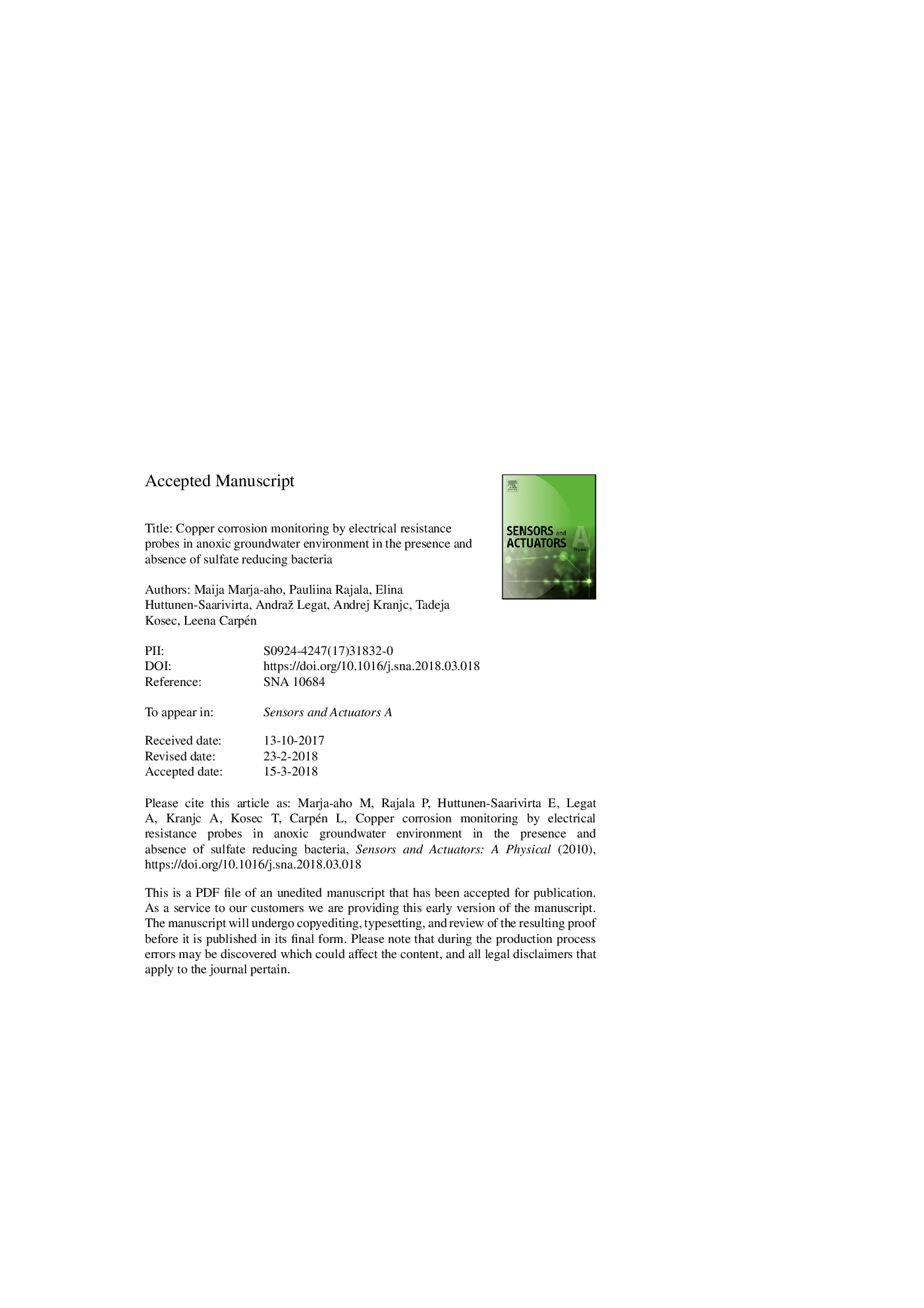| Article ID | Journal | Published Year | Pages | File Type |
|---|---|---|---|---|
| 7133456 | Sensors and Actuators A: Physical | 2018 | 19 Pages |
Abstract
In this study the results from corrosion monitoring of copper in anoxic simulated ground water in the presence and absence of sulfate-reducing bacteria (SRB) enriched from the planned disposal site of high level nuclear waste are presented. Copper electric resistance (ER) probes were applied as a physical tool for monitoring corrosion of copper disposal canister. The results are compared to those obtained by linear polarization resistance (LPR) measurements, conducted for parallel OFP-Cu specimens during the experiments, and by weight loss measurements. ER probe method was the most sensitive to corrosion and gave the most conservative estimation of the lifetime of copper. Independently whether the environment was abiotic or biotic, ER probe data showed relatively similar trends to the results from LPR and weight loss measurements. Difference in sensitivity of the methods arises from different ability to detect pitting corrosion and microbial activities on specimen surfaces in the two environments.
Keywords
Related Topics
Physical Sciences and Engineering
Chemistry
Electrochemistry
Authors
Maija Marja-aho, Pauliina Rajala, Elina Huttunen-Saarivirta, Andraž Legat, Andrej Kranjc, Tadeja Kosec, Leena Carpén,
